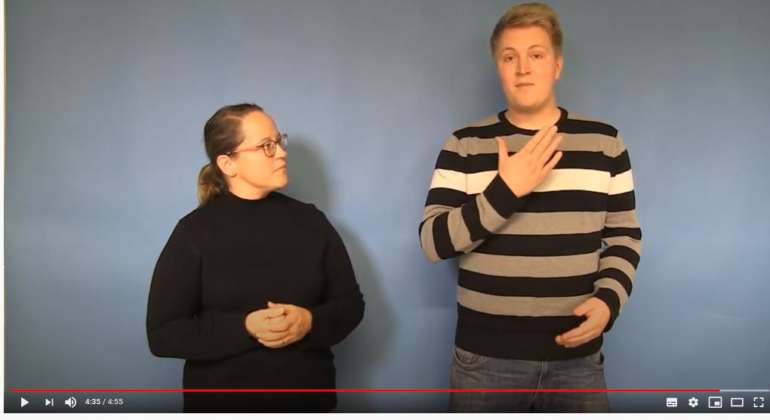Teaching Materials for Studying Communication and Sign Language – graduation via project participation

The DVINE project is a project managed by Diak that promotes human wellbeing, health, and dignity. I was introduced to the project in the autumn of 2019 by a DVINE project member and a lecturer in Diak as a potential topic for my thesis. I was immediately hooked, because the DVINE project seemed an extremely interesting international project.
Teaching materials – three videos produced
My role in the DVINE project was to produce teaching materials. The materials consisted of three videos as pre-course materials, a learning game, and five communication folders.
The video material and the learning game were used in pre-class prepping, and the picture material was used in class as a supportive material.
Feedback from the students
The purpose of my thesis was to study the kind of educational material that supports the DVINE project’s intensive courses in Nepal and Vietnam. The purpose of the teaching materials was to provide a basis for the kind of materials that could be produced for international projects. The information on which this thesis was based included studies of augmentative and assistive methods (AAC methods), studies about the culture and population in the target countries, and picture and video material production theory.
The efficiency of the materials produced was analysed from the results of the questionnaire about the intensive course and a Kahoot! learning game. The questionnaire included open questions about the materials and a numerical scale. Four groups responded to the questionnaire, two from Nepal, and two from Vietnam. The size of the groups ranged from 24 to 34 respondents. The answers included the DVINE project team members, local teachers, and students in the field of social work, healthcare and microbiology.
The analysis of the questionnaire and Kahoot! learning game revealed that the materials produced for the intensive course were strong and supported the intensive course. The results were indicative and can be used to develop future similar projects. Based on the questionnaire, the most important development proposals were to translate the produced material into the language of the partner countries and explain the difficult terms linked to the field of practice.
Finalised thesis published
Being part of the DVINE project was very rewarding and instructive, and it provided a good experience of project work in my studies. While working on my thesis, being involved in the project really clarified the course of the project for me, and it has encouraged me to participate in other international projects in the future.
I want to thank everyone who has participated in this project and wish you all the best in the future.
My finalised bachelor’s thesis can be found online (sorry, in Finnish, but please see abstract in English): Hietala, I. 2020. Teaching materials for the DVINE project. Final thesis. Diaconia University of Applied Sciences.
Text: Ilari Hietala
Picture: screenshot from video 1: Diak’s sign language interpreting lecturer Ulla Niittyinperä and graduate student Ilari Hietala.
